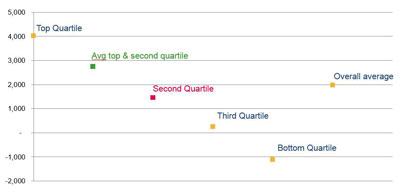The introduction of the Increasing Consumer Choice Bill into Parliament in February provides an interesting study on the impact on demand and supply within the context of a system that ratios service provision.
There is no argument the ageing population means there is strong future demand for aged care services and that consumers prefer these services to be delivered in the home.
Consumer Directed Care is intended to address the 'limited choice and flexibility for consumers in the current care at home arrangements including a lack of portability'.1 It will achieve this by moving the funding entitlement direct to the consumer. It is reasoned that this will empower consumers and drive productivity in the sector. Whether this occurs, time will tell, however at this time we can examine what might occur.
This article considers how continuing supply management by the Department of Health might impact on the goal of consumer choice and how providers may respond to the regulatory changes.
Under the proposed legislation from February 2017 consumers will be assessed for entitlement to a home care package as is the current position. Presently once assessed the consumer seeks out a provider who has the relevant package (un-utilised) appropriate to their assessment and then engages this provider to provide the services. Under this system the approved provider of home care packages is a 'Destination Service Provider'.
Under the proposals, once a consumer is assessed as having an entitlement to care they will need to be a 'Prioritised Home Care Recipient' before their care will be government funded. The consumer will get an ACAT assessment and then, under a bureaucratic process, become prioritised to receive government funding for in home care. To the extent there are multiple services providers to choose from those who have been prioritised will have increased choice of provider?
It is through this prioritising process the department will continue to manage supply (and cost). This change will mean the approved provider is no longer a 'destination service provider' and instead they will become a 'provider of choice'.
What the proposals do not change is the available supply of funded home care packages. What distinguishes 'providers of choice' from 'destination providers' is the need to position the service in the minds of potential customers relative to their competition. Typically providers of choice cast their marketing net widely to attract all potential customers to their offer.
From the providers’ perspective, notwithstanding that the overall demand for services is still tightly regulated and therefore the number of possible customers is limited, they will not be able to plan for the quantum of services delivered in a supply constrained environment.
A key feature of being a provider of choice is the need to have market position. Developing a market position will undoubtedly result in service differentiation and add costs to service providers. Whether the level of profitability in the provision of home care services or the anticipated consolidation of providers will generate the scale to cover these costs is yet to be seen.
Modelling by RSM suggests that scale is going to be critical to economic sustainability in the home care sector. The following graph shows the quartile performance of home care providers (EBITDA in 2014) and the table translates this into EBITDA at certain operational sizes.

Projected EBITDA $ |
||
|---|---|---|
| Places | Second quartile performance | Avg top & second quartile performance |
| 100 | $132,979 | $251,347 |
| 500 | $664,897 | $1,256,733 |
| 750 | $997,345 | $1,885,099 |
Based on this data a provider in the first or second quartile could expect to generate less than $2,500 EBITDA per place or $250,000 from 100 packages fully delivered.
Consumer choice and empowerment comes when service providers are also empowered and this occurs in an open market setting. Limiting supply to contain government outlays is a common and legitimate feature of a publicly funded system. However, the proposed changes to the system both acknowledge and then fail to address the many potential care recipients who will not have access to home care because they have not been prioritised.
Perhaps the greatest opportunity for providers once the changes are implemented is to position themselves to provide choice to those consumers who have an assessed need and because they have not been prioritised to receive government
funded services have no real consumer choice.
1. Aged Care Legislation Amendment (Increasing Consumer Choice) Bill 2016 Explanatory Memorandum




